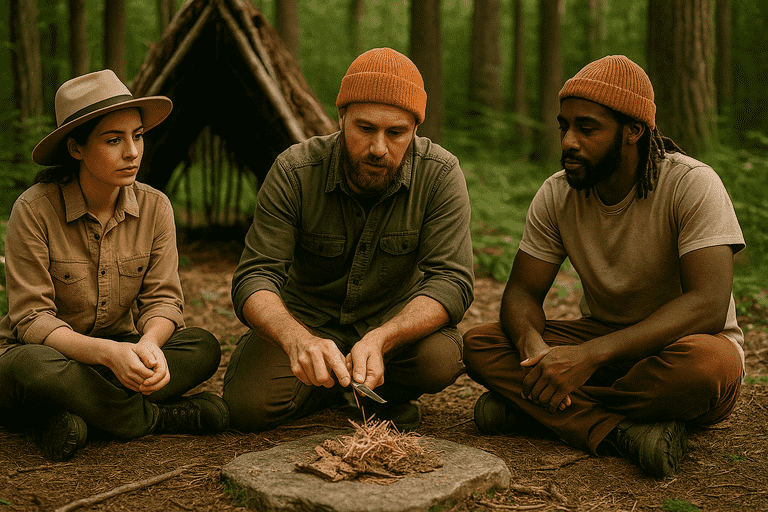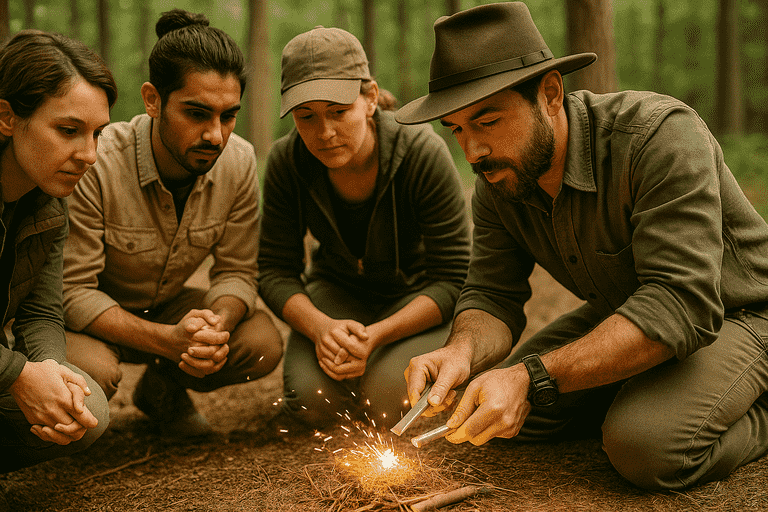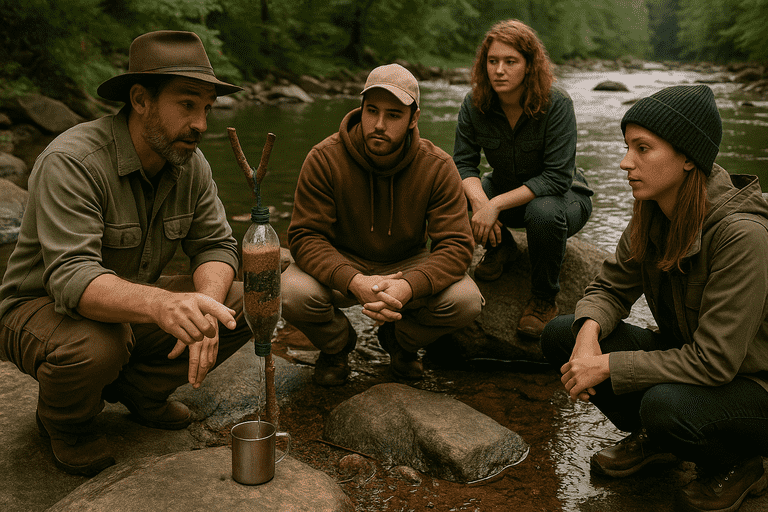Reconnecting with nature in today’s fast-paced world is not just refreshing—it’s essential. Bushcraft classes offer the perfect opportunity to step away from screens and rediscover the wild. For instance, you’ll learn how to build shelters, track animals, and make fire using primitive tools. In addition, you’ll gain survival knowledge that few people possess today.
These classes aren’t just about skills—they build confidence, resilience, and respect for the environment. Therefore, whether you’re a seasoned camper or a complete beginner, bushcraft can reshape how you see the outdoors. Moreover, you’ll find it empowering to depend on nature and your own abilities rather than technology or convenience.
Why Bushcraft Classes Are Growing in Popularity
Over the past decade, interest in bushcraft classes has exploded. One key reason is the rising popularity of survival shows and outdoor influencers who highlight the value of wilderness skills. For instance, seeing someone build a fire in the rain or cook with foraged ingredients sparks curiosity in people of all ages.
Wild Food as a Gateway to Self-Reliance and Natural Living
In addition, more individuals are seeking ways to disconnect from urban life and find peace in natural settings. Therefore, these courses offer a balanced combination of learning, physical challenge, and relaxation. Unlike traditional classrooms, learning happens through action—carving wood, starting fires, and reading weather patterns. That hands-on approach keeps people coming back.

What You Learn in a Typical Bushcraft Class
A standard bushcraft classes curriculum covers a variety of essential outdoor skills. For instance, you’ll start by learning how to identify safe locations for shelter and how to build various types using natural materials. Afterward, fire-starting becomes the focus—ranging from modern tools like ferro rods to ancient friction techniques.
In addition, foraging plays a big role. You’ll learn which plants are edible, which are medicinal, and which to avoid entirely. Water purification, knot-tying, animal tracking, and basic tool use are also common lessons. Therefore, by the end of the course, students often feel more capable and self-sufficient than ever before.
Bushcraft Classes for All Ages and Experience Levels
One of the best things about bushcraft classes is their inclusivity. Whether you’re 16 or 60, there’s a course that fits your abilities and interests. For instance, beginner classes focus on safety, awareness, and foundational techniques. Advanced classes may involve overnight wilderness survival, navigation without maps, or crafting tools from scratch.
Choosing the Right Orienteering Equipment for Every Adventure
In addition, many programs cater to families, offering shared learning experiences for parents and children. This not only teaches practical skills but also strengthens family bonds through teamwork and shared challenges. Therefore, bushcraft becomes more than a hobby—it becomes a meaningful way to spend time together.

The Psychological Benefits of Bushcraft Training
Beyond physical skills, bushcraft classes also enhance mental well-being. For instance, working with your hands and solving real-world problems in nature reduces anxiety and boosts focus. Studies show that spending time outdoors improves mood, memory, and even immune function.
Atlas Survival Shelter Prices: A Comprehensive Guide
Moreover, these classes cultivate patience and mindfulness. Instead of rushing, you slow down and observe. Every task—from sharpening a blade to setting a trap—requires attention and care. In addition, nature rewards those who listen, wait, and adapt. Therefore, the psychological benefits are just as valuable as the practical ones.
How to Choose the Right Bushcraft Class for You
When selecting among different bushcraft classes, consider your goals and current experience. For instance, are you looking for a weekend introduction or a multi-week wilderness immersion? Do you want to focus on survival tactics, natural medicine, or primitive crafts?
In addition, check for instructor credentials and course reviews. Qualified instructors not only keep you safe but also enhance your learning. A well-structured course should include a balance of instruction, practice, and reflection. Therefore, doing some research beforehand ensures you get the most from your experience.
Bushcraft and Sustainability: Learning to Live Lightly
At its core, bushcraft classes teach more than survival—they promote a deep respect for the land. For instance, learning to gather food without damaging ecosystems or to start fires responsibly instills environmentally conscious habits. In addition, students are often encouraged to follow the “Leave No Trace” philosophy, minimizing their impact on nature.
Therefore, bushcraft is a gateway to sustainable living. It helps you understand your place within the natural world, not apart from it. Moreover, it encourages ethical choices and self-reliance in everyday life—not just in the woods. These lessons ripple far beyond the duration of the class.

Building a Lifestyle Around Bushcraft
For many, bushcraft classes mark the beginning of a lifelong passion. What starts as a weekend workshop can evolve into regular camping trips, gear-making, and even teaching others. For instance, some graduates go on to lead their own workshops or write about wilderness living.
In addition, bushcraft fosters a sense of community. Enthusiasts often form groups, share skills online, or gather for seasonal meetups. Therefore, it becomes more than a set of techniques—it becomes a culture. That culture values simplicity, resourcefulness, and respect for the Earth.

